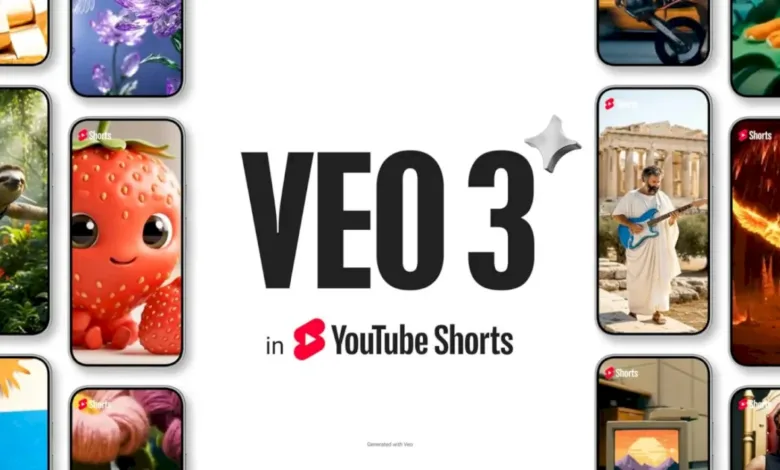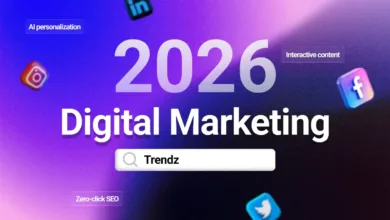YouTube Veo 3 Launches for Shorts in MENA Region

▼ Summary
– YouTube is expanding its generative video service “Veo 3” in the Middle East via YouTube Shorts, enabling Gulf users to create realistic videos from text.
– Veo 3 integrates audio directly into videos, including effects and dialogues, and generates highly realistic scenes from text or images, marking a leap in AI video technology.
– The Gulf region, especially Saudi Arabia, is a key market with high internet and smartphone usage, aligning with digital transformation goals like Saudi Vision 2030.
– While Veo 3 offers benefits for education and marketing, it raises risks of hyper-realistic deceptive videos, prompting Google to implement safeguards like SynthID watermarks.
– The tool’s expansion must comply with Gulf data sovereignty and privacy regulations, and it is transforming creativity by making text the basis for video production.
YouTube is bringing its advanced generative video tool, Veo 3, to the Middle East and North Africa through YouTube Shorts. This rollout will provide creators, especially in Gulf nations like Saudi Arabia, with powerful AI capabilities to produce remarkably realistic video clips using simple text prompts. The service will initially support English, with plans to expand language options and introduce AI-powered translation features for various Arabic dialects in the near future. Already, over 51,000 Egyptian creators are utilizing a related feature that translates Egyptian Arabic content into English, helping them connect with viewers worldwide.
Veo 3 marks a significant advancement in generative video technology. Unlike earlier systems, it seamlessly integrates audio elements, including sound effects, ambient noise, and dialogue, directly into the video during the generation process. According to Google DeepMind, this unified approach allows the system to automatically produce cohesive audiovisual scenes. Tech analysts describe this capability as a turning point for visual media, noting that Veo 3 can create highly realistic scenes from a simple text description or a single still image. The resulting clips are so polished they can be difficult to distinguish from traditionally filmed video.
The Gulf region, and Saudi Arabia in particular, offers a fertile ground for this new technology. Internet penetration in the kingdom exceeds 90%, and smartphone usage rates are among the highest globally. This makes it one of YouTube’s most dynamic markets. Research from GWI highlights a distinctive audience pattern: 61% of YouTube Shorts users in Saudi Arabia and 54% in the UAE do not use Instagram Reels. This strategic expansion aligns with regional government initiatives, such as Saudi Vision 2030, that prioritize digital transformation and aim to bolster the creative economy. Providing local access to Veo 3 empowers creators, media organizations, and public entities to produce high-quality Arabic content more efficiently.
The ability to generate complete videos from text commands unlocks new possibilities across education, marketing, and journalism. Schools can develop engaging educational materials in Arabic, while businesses can create professional promotional videos without large production budgets. However, the rise of such convincing synthetic media also brings serious concerns. Media outlets have warned about the potential for hyper-realistic videos to be used for deception or forgery, making it challenging to differentiate authentic content from fabricated material. In response, Google states it has embedded protective measures, including its SynthID watermark for identifying AI-generated content, and enforces strict usage policies to mitigate misuse.
As Gulf countries accelerate investments in sovereign data centers and local cloud infrastructure, tools like Veo 3 introduce new questions about data storage and management. Generative AI processes personal text, image, and audio inputs, raising important privacy considerations. To ensure compliance, Google is expected to adopt a phased approach that adheres to local regulations, such as those set by Saudi Arabia’s National Cybersecurity Authority and data protection laws in the UAE. Regional analysts suggest that the long-term success of these AI tools in Gulf markets will depend heavily on their alignment with emerging digital sovereignty principles.
The impact of Veo 3 extends beyond just new production techniques; it is reshaping the very nature of creativity. Instead of starting with a camera or complex editing software, creators can now begin with a text prompt. This shift toward prompt-based creation is part of a broader global trend. In the Middle East, where the Arabic content industry is flourishing and competition is intensifying, Veo 3 can serve as a vital enabler for a new wave of creators. They can innovate in their native language and effortlessly share their work with international audiences through AI-powered translation.
With the arrival of Veo 3 in the region, Arabic content creation is entering a new developmental phase. Artificial intelligence is no longer just a background technology but an active collaborator in the creative process, contributing to the generation of imagery, sound, and narrative concepts.
(Source: SadaNews)



